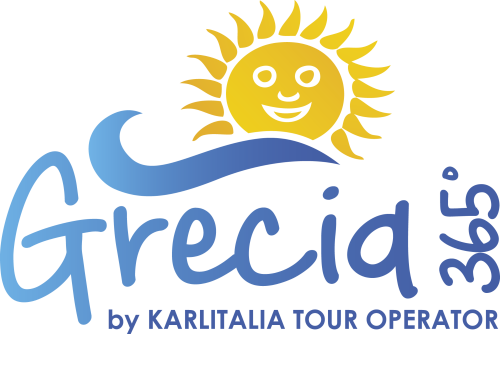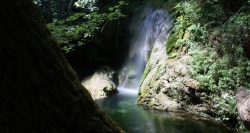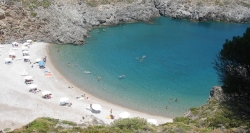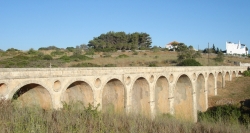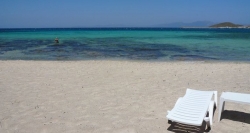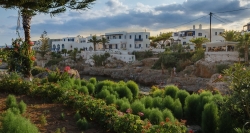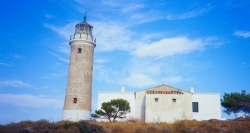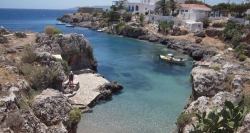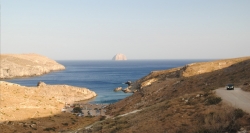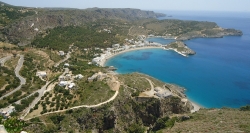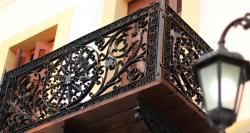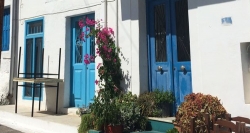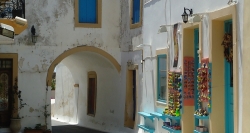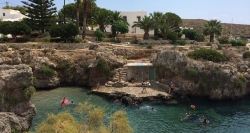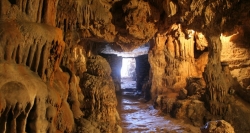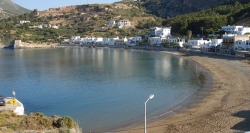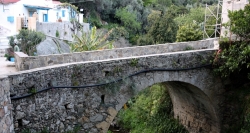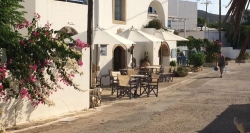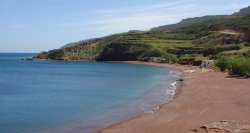Le nostre destinazioni più richieste
I nostri tour:
Common description
Aphrodite's Island
The island of Kythira is the birthplace of Aphrodite, goddess of love, according to Hesiod (ancient Greek poet who lived at the time of Homer). The island was a source of inspiration for the French painter Jean Antoine Watteau and for the 19th century. great French poet Charles Baudelaire, and for the twentieth century. Greek director Theo Angelopoulos.
It is a place endowed with great beauty: valleys that end at the seashore; slopes dressed in green, or rocky and dry; spring waters bubbling or cascading down the slopes; gorgeous beaches; beautiful picturesque villages; tasty local dishes; and an architecture that blends apparent Venetian influences with the style found in Crete and Mani (southern Peloponnese).
Kythira or Cerigo (Venetian name for the island) is the southernmost member of the Ionian Islands and is located at the entrance to the Gulf of Laconia. The architectural style of the island is found in all the villages built mostly in traditional style, such as the Byzantine churches and the Venetian castle that dominates the hill above Chora (the capital).
Most of the island's festivals and celebrations take place during the summer. Join them and you will get a personal insight into the local traditions of Kythira, which remain very much alive today.
Explore the island
Start in Platia Ammos, the northernmost seaside village with quaint houses and fish taverns. A ravine with many freshwater springs and streams starts from the Gerakari area and reaches up to this beach. It is a quiet place to have a relaxing holiday. The dirt road that starts from here will take you to Cape Spathi; it is here that you will see the Moudari lighthouse from 1857, one of the largest in the Greek seas, reaching a height of 25 metres. To get to it, you have to follow the path. When the lighthouse keeper is there, you may be allowed to see the inside. Weather permitting, this incredibly beautiful location will give you a beautiful view of the entire Gulf of Laconia, from Cape Maleas all the way to Cape Tainaro.
From Platia Ammos head towards Karavas (3 km south-west). You will enjoy your hike through the green gorge with tall plane trees and babbling streams. Don't forget to visit the area near the Amir Ali springs.
In the north-eastern part of Kythira, the village of Agia Pelagia boasts a beautiful beach, numerous taverns and tourist accommodation, as well as the oldest port on the island. Enjoy the beauty of nature as you hike along the Kakia Lagada Gorge, which ends here.
A beautiful hiking route, through fragrant pine trees, will lead you to Potamos, the largest village in Kythira. Its traditional houses, the Venetian Guardiola and the neoclassical kindergarten building are interesting from an architectural point of view. You will find traditional cafes, bakeries and taverns serving delicious local dishes. Accommodation options are also many. If you visit the town on a Sunday, you will see the open-air market, which takes place on the cobbled main square. Taste and buy traditional local products. On August 15th [a major Greek religious holiday] a huge celebration takes place in the town square with lots of good food, dancing and local wine.
Head south and you will reach Aroniadika, a traditional village with white houses with arches and verandas adorned with bougainvillea. The architecture is reminiscent of the style usually found in the Cyclades. Here you will find top quality honey from local producers.
From the village of Potamos, follow the signs for 8 km towards the historic city of Paleochora, now in ruins. You will find the view fascinating. This place was once the Byzantine capital of Kythira, built on a hill and protected by cliffs, a short distance from the shore and invisible from the sea. The town was razed to the ground in 1537 by Barbarossa, a feared pirate who roamed the Mediterranean at the time. The remains of houses and churches bear witness to the town's great past.
Then, follow the main road south. You will reach Chora, the postcard-perfect capital and administrative center of the island. Stroll along the alleys past the stately homes of ancient aristocratic families. The streets are very narrow, connected by arches, the houses are built next to each other, following the unadorned architectural style of the island. The Venetian influence is everywhere. Be sure to visit the Archaeological Museum, on the outskirts.
Drive to the nearby lively village of Kapsali and enjoy your coffee or ouzo drink near the port at any time of the day. The view of Chora and its medieval castle overlooking the sea is nothing short of breathtaking. Stay in Kapsali for the evening, as this is the nightlife hot spot of the island.
Take note of the visit to the castles of Kythira:
• Chora castle dominates the city. Its construction began during the late Byzantine period and was completed when the Venetians took control of the island. It served as the seat of the Venetian governor in Kythira. Inside you'll see Byzantine churches and other buildings still standing, as well as the residence of the Venetian governor and, later, the British commissioner. Today it houses the Historical Archive of Kythira with numerous documents dating back to the Venetian occupation.
• Kato Chora Mylopotamou castle. Inside, you'll see the main neighborhood with many houses that remain in good condition, as well as notable Byzantine and late-Byzantine churches with incredible wall paintings and icons. At the entrance to the Fort, you will see the coat of arms depicting the Lion of San Marco, emblem of the Republic of Venice.
• Avlemona Castle was built at the mouth of the natural harbor by the Venetians to protect it from incursions.
Those of you interested in visiting caves will enjoy visiting Agia Sofia Mylopotamou cave: it is 100m away. long, it covers an area of 2000 m2, and there are rooms with beautiful stalactites and stalagmites. At the entrance to the cave you enter the small chapel of Agia Sofia: the religious paintings on the icon screen date back to the 18th century. The thirteenth century. the murals are signed by Theodoros, a Byzantine painter. You can also visit Chousti Cave in Diakofti.
Here are some more interesting places to visit:
• Mylapidae school
This building was a typical educational institution built by the English when the island was under their rule. It is located on a hill, between the villages of Fatsadika and Livadi.
• The island's wind and water mills
The 19th century The island's windmills were built of stone and were essential to local agricultural activities. You will see them standing – alone or in pairs – on the outskirts of towns, in places easily accessible from cultivated plots of land. Over the course of the 20th century, milling of grain in windmills was gradually abandoned, and by 1955 all windmills on the island were closed. You can also see the 23 watermills still standing, but only three of them remain in fairly good condition. Most of them are located in the valley near the village of Mylopotamos.
• The ancient port of Skandeia
Visit to the archaeological site and ancient tombs.
• Katouni Bridge
It was built in 1826, under British rule. It's 110m. long, 6 m. wide and the maximum height is 15 m. It is supported by 13 arches and 12 cylindrical openings arranged in perfect symmetry.
Taste the delicious traditional products:
• Try local thyme honey, you will be impressed by its flavour, aroma and colour.
• Sip a shot of fatourada, the flavorful local liqueur, made with pure tsipouro spirit, cinnamon and cloves, or flavored with fruits such as mandarin, orange and apricot, after a long period of processing the fruit peel and stone ( sun-ripened fatourada)
• Taste Rozedes: This traditional dessert is made with thyme honey, almonds, semolina, sugar, cinnamon and cloves. It can be kept for many months in excellent condition.
• Pastitseta is a dessert of Venetian origin: it is made with vanilla, fresh butter and quince jam.
• Xerotigana is made with thin layers of pasta arranged in the shape of a water lily. The thin and crunchy pastry is fried and seasoned with thyme honey, sesame seeds and cinnamon.
• Pasta mylou is the ideal dessert for you if you love almonds; to make it, the almonds are blanched and ground in a food mill by hand, until they form a paste which is mixed with vanilla extract and a syrup to bind the ingredients.
• Koumara is a full-sized dessert made from strawberry tree fruits.
Boutino is a type of sponge cake prepared with fresh milk, top quality butter, free-range eggs, semolina, sugar, currants, lightly browned almonds and ground cinnamon. Try it with ice cream. Melounia is a small honey cake, made with quality local products: thyme honey, almonds, flour and extra virgin olive oil.
Wine lovers among you will find some very interesting labels in Kythira. You can try white, rosé or red wines made from local grape varieties, such as arikanas (produce a rosé wine), roditis, petrolanos, kydonitsa (produce white wines) and toukoumaki (produce a red wine). Obviously you will find high quality wines produced by combining local varieties with imported ones.
Before leaving Kythira, be sure to buy a bouquet of dried houseleek flowers - this is a beautiful small endemic flower that grows only in the southern parts of the island on steep rocks and on the islet of Chytra, opposite Diakofti. It was so called by the Venetians who saw that these flowers remain intact (semper viva: always alive) and do not wither for a long time. It will be a great memory of your trip here.
More information, useful advice and curiosities in the travel documents that will be sent before departure.
The island of Kythira is the birthplace of Aphrodite, goddess of love, according to Hesiod (ancient Greek poet who lived at the time of Homer). The island was a source of inspiration for the French painter Jean Antoine Watteau and for the 19th century. great French poet Charles Baudelaire, and for the twentieth century. Greek director Theo Angelopoulos.
It is a place endowed with great beauty: valleys that end at the seashore; slopes dressed in green, or rocky and dry; spring waters bubbling or cascading down the slopes; gorgeous beaches; beautiful picturesque villages; tasty local dishes; and an architecture that blends apparent Venetian influences with the style found in Crete and Mani (southern Peloponnese).
Kythira or Cerigo (Venetian name for the island) is the southernmost member of the Ionian Islands and is located at the entrance to the Gulf of Laconia. The architectural style of the island is found in all the villages built mostly in traditional style, such as the Byzantine churches and the Venetian castle that dominates the hill above Chora (the capital).
Most of the island's festivals and celebrations take place during the summer. Join them and you will get a personal insight into the local traditions of Kythira, which remain very much alive today.
Explore the island
Start in Platia Ammos, the northernmost seaside village with quaint houses and fish taverns. A ravine with many freshwater springs and streams starts from the Gerakari area and reaches up to this beach. It is a quiet place to have a relaxing holiday. The dirt road that starts from here will take you to Cape Spathi; it is here that you will see the Moudari lighthouse from 1857, one of the largest in the Greek seas, reaching a height of 25 metres. To get to it, you have to follow the path. When the lighthouse keeper is there, you may be allowed to see the inside. Weather permitting, this incredibly beautiful location will give you a beautiful view of the entire Gulf of Laconia, from Cape Maleas all the way to Cape Tainaro.
From Platia Ammos head towards Karavas (3 km south-west). You will enjoy your hike through the green gorge with tall plane trees and babbling streams. Don't forget to visit the area near the Amir Ali springs.
In the north-eastern part of Kythira, the village of Agia Pelagia boasts a beautiful beach, numerous taverns and tourist accommodation, as well as the oldest port on the island. Enjoy the beauty of nature as you hike along the Kakia Lagada Gorge, which ends here.
A beautiful hiking route, through fragrant pine trees, will lead you to Potamos, the largest village in Kythira. Its traditional houses, the Venetian Guardiola and the neoclassical kindergarten building are interesting from an architectural point of view. You will find traditional cafes, bakeries and taverns serving delicious local dishes. Accommodation options are also many. If you visit the town on a Sunday, you will see the open-air market, which takes place on the cobbled main square. Taste and buy traditional local products. On August 15th [a major Greek religious holiday] a huge celebration takes place in the town square with lots of good food, dancing and local wine.
Head south and you will reach Aroniadika, a traditional village with white houses with arches and verandas adorned with bougainvillea. The architecture is reminiscent of the style usually found in the Cyclades. Here you will find top quality honey from local producers.
From the village of Potamos, follow the signs for 8 km towards the historic city of Paleochora, now in ruins. You will find the view fascinating. This place was once the Byzantine capital of Kythira, built on a hill and protected by cliffs, a short distance from the shore and invisible from the sea. The town was razed to the ground in 1537 by Barbarossa, a feared pirate who roamed the Mediterranean at the time. The remains of houses and churches bear witness to the town's great past.
Then, follow the main road south. You will reach Chora, the postcard-perfect capital and administrative center of the island. Stroll along the alleys past the stately homes of ancient aristocratic families. The streets are very narrow, connected by arches, the houses are built next to each other, following the unadorned architectural style of the island. The Venetian influence is everywhere. Be sure to visit the Archaeological Museum, on the outskirts.
Drive to the nearby lively village of Kapsali and enjoy your coffee or ouzo drink near the port at any time of the day. The view of Chora and its medieval castle overlooking the sea is nothing short of breathtaking. Stay in Kapsali for the evening, as this is the nightlife hot spot of the island.
Take note of the visit to the castles of Kythira:
• Chora castle dominates the city. Its construction began during the late Byzantine period and was completed when the Venetians took control of the island. It served as the seat of the Venetian governor in Kythira. Inside you'll see Byzantine churches and other buildings still standing, as well as the residence of the Venetian governor and, later, the British commissioner. Today it houses the Historical Archive of Kythira with numerous documents dating back to the Venetian occupation.
• Kato Chora Mylopotamou castle. Inside, you'll see the main neighborhood with many houses that remain in good condition, as well as notable Byzantine and late-Byzantine churches with incredible wall paintings and icons. At the entrance to the Fort, you will see the coat of arms depicting the Lion of San Marco, emblem of the Republic of Venice.
• Avlemona Castle was built at the mouth of the natural harbor by the Venetians to protect it from incursions.
Those of you interested in visiting caves will enjoy visiting Agia Sofia Mylopotamou cave: it is 100m away. long, it covers an area of 2000 m2, and there are rooms with beautiful stalactites and stalagmites. At the entrance to the cave you enter the small chapel of Agia Sofia: the religious paintings on the icon screen date back to the 18th century. The thirteenth century. the murals are signed by Theodoros, a Byzantine painter. You can also visit Chousti Cave in Diakofti.
Here are some more interesting places to visit:
• Mylapidae school
This building was a typical educational institution built by the English when the island was under their rule. It is located on a hill, between the villages of Fatsadika and Livadi.
• The island's wind and water mills
The 19th century The island's windmills were built of stone and were essential to local agricultural activities. You will see them standing – alone or in pairs – on the outskirts of towns, in places easily accessible from cultivated plots of land. Over the course of the 20th century, milling of grain in windmills was gradually abandoned, and by 1955 all windmills on the island were closed. You can also see the 23 watermills still standing, but only three of them remain in fairly good condition. Most of them are located in the valley near the village of Mylopotamos.
• The ancient port of Skandeia
Visit to the archaeological site and ancient tombs.
• Katouni Bridge
It was built in 1826, under British rule. It's 110m. long, 6 m. wide and the maximum height is 15 m. It is supported by 13 arches and 12 cylindrical openings arranged in perfect symmetry.
Taste the delicious traditional products:
• Try local thyme honey, you will be impressed by its flavour, aroma and colour.
• Sip a shot of fatourada, the flavorful local liqueur, made with pure tsipouro spirit, cinnamon and cloves, or flavored with fruits such as mandarin, orange and apricot, after a long period of processing the fruit peel and stone ( sun-ripened fatourada)
• Taste Rozedes: This traditional dessert is made with thyme honey, almonds, semolina, sugar, cinnamon and cloves. It can be kept for many months in excellent condition.
• Pastitseta is a dessert of Venetian origin: it is made with vanilla, fresh butter and quince jam.
• Xerotigana is made with thin layers of pasta arranged in the shape of a water lily. The thin and crunchy pastry is fried and seasoned with thyme honey, sesame seeds and cinnamon.
• Pasta mylou is the ideal dessert for you if you love almonds; to make it, the almonds are blanched and ground in a food mill by hand, until they form a paste which is mixed with vanilla extract and a syrup to bind the ingredients.
• Koumara is a full-sized dessert made from strawberry tree fruits.
Boutino is a type of sponge cake prepared with fresh milk, top quality butter, free-range eggs, semolina, sugar, currants, lightly browned almonds and ground cinnamon. Try it with ice cream. Melounia is a small honey cake, made with quality local products: thyme honey, almonds, flour and extra virgin olive oil.
Wine lovers among you will find some very interesting labels in Kythira. You can try white, rosé or red wines made from local grape varieties, such as arikanas (produce a rosé wine), roditis, petrolanos, kydonitsa (produce white wines) and toukoumaki (produce a red wine). Obviously you will find high quality wines produced by combining local varieties with imported ones.
Before leaving Kythira, be sure to buy a bouquet of dried houseleek flowers - this is a beautiful small endemic flower that grows only in the southern parts of the island on steep rocks and on the islet of Chytra, opposite Diakofti. It was so called by the Venetians who saw that these flowers remain intact (semper viva: always alive) and do not wither for a long time. It will be a great memory of your trip here.
More information, useful advice and curiosities in the travel documents that will be sent before departure.
